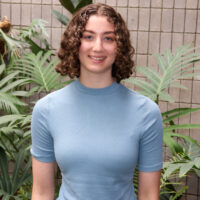
High-throughput phenotyping of Galápagos Island tomatoes with computer vision
Cultivated tomato plants and their wild relatives exhibit considerable phenotypic diversity and are therefore a useful model system in fruit biology. To measure quantitative trait variation in Solanum cheesmaniae, a wild tomato relative native to the Galápagos Islands, we developed a computer vision-based approach. The fruit are first photographed along with a color checker and photomacrographic scale. During image processing, the fruit are segmented from the image background, and size, shape, and color measurements are recorded. We demonstrate the effectiveness of our tool by comparing the computational measurements with those taken manually. Fruit characteristics across 25 accessions of S. cheesmaniae were analyzed to identify phylogenetic and geographic patterns. Future work will apply our pipeline to characterize a diversity panel that spans wide genotypic and phenotypic variation in wild and cultivated tomato species. We aim to use computationally-measured phenotypes to predict physiological or biochemical traits, thus saving time and resources while increasing the consistency and accuracy of plant phenotype analysis. The ability to easily and consistently measure agronomically important plant phenotypes via computer vision will assist plant breeders and geneticists in improving crop varieties for commercial production.
During my time in BTI’s REU program, I gained a new appreciation for how plants serve as model systems for the development of computational biology tools. By working in the field, greenhouse, and lab, I was able to participate in each component of the project and understand the biological basis for the computational tool I was creating. I enjoyed immersing myself in the work, while also taking time for activities such as hiking, blueberry picking, and shopping at the Ithaca Farmers Market. The computational skills and laboratory techniques that I learned this summer are transferable to any research or data analysis project. My experience at BTI strengthened my interest in computational biology and inspired me to keep exploring the many opportunities in genomics and plant research.
